
Recording Dead Poet Society
Fission – one of the hardest-hitting and most innovative albums of the year – was recorded in a suburban Los Angeles Airbnb with Canadian producer/engineer Anton DeLost at the controls.
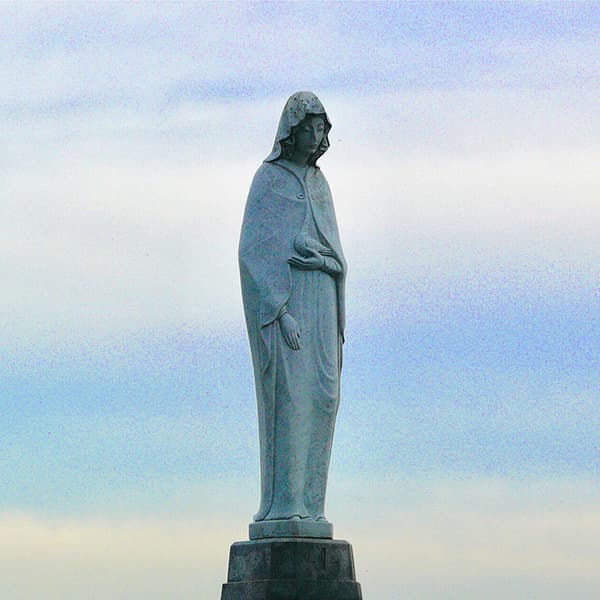
Artist: Dead Poet Society
Album: Fission
Dead Poet Society’s second album, Fission, is an interesting record born out of an innovative preproduction and recording approach. The band engaged a producer/engineer in Anton DeLost who’s not afraid of shaking things up and getting his hands dirty. Anton sets the scene for us: “During the making of Fission, every step of the way was a big challenge. For me personally it was a moment of major change. I moved from Toronto to Los Angeles. I did pre-production via Zoom from Toronto, recorded the album in an AirBnb in Los Angeles, and mixed in my new place in Los Angeles, on speakers I’d never used before, in an untreated room. I’d also never worked with Dead Poet Society. There was so much that was brand new!
“The band are geniuses. They’re so talented and great producers. And they wanted to do something groundbreaking. They wanted to make rock that hadn’t been done before, and use unusual techniques, like fretless guitars, mixed with Delta blues, mixed with pop, mixed with indie rock, mixed with the heaviest of heavy. It was a chance for me to step out of anything formulaic, and just focus on what the songs needed and the band wanted. We definitely were trying to make something life-changing, as we always do when creating, but we weren’t trying to just phone-in obvious radio choruses on every song.”
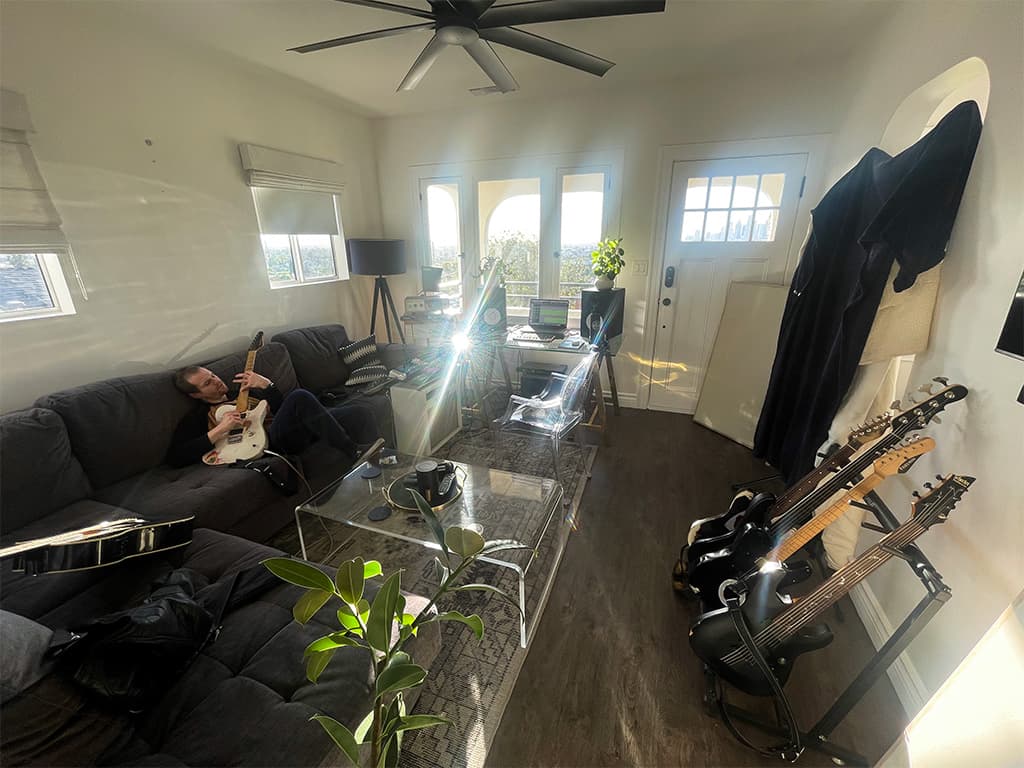
The LA Airbnb where Fission was recorded.
“Of course, labels want radio-friendly songs. The band is not against that, but it’s not that type of band. They’re more like: ‘we want do something new and interesting, and if that does well on radio, awesome, but we just want to do what we do, and throw shit at the wall until something really special happens.’ It took me a while to get used to that. As a producer, I was on both ends: looking for that big rock song, and wanting to do something unique and special, and tried to find a sweet spot. There was a back and forth between trying to find commercial success via radio songs, and more organic, viral success with less formulaic songs based more on creativity and feel. You may end up in the same place, but you take different routes getting there.”
DRAGGED FORWARD
Rock ‘n’ roll may have been declared dead, but if DeLost has anything to do with it, reports of its demise are, as they say, wildly exaggerated. DeLost, and the artists and bands he works with, are very much, and very impressively, keeping rock alive, and kicking.
Moreover, rather than prop up old rockers, DeLost is working with a young generation of rock bands, with recent credits including The Warning, State Champs, BRKN LOVE, Pop Evil, Cleopatrick, Silverstein, Highly Suspect, and Hawthorne Heights. While DeLost also ventures into the alternative pop arena, it’s his boundary-pushing rock work that catches a lot of attention. His impressive co-writing, engineering, mixing and co-production work on Fission, Dead Poet Society’s second album, is a case in point.
As DeLost explained, Fission marked a seachange in many aspects of his work. In addition to moving from Toronto to LA, setting up a new studio, working with a new band, and trying new approaches to making music, he also whittled down an impressive collection of studio hardware to in-the-box basics. In short, DeLost is not only dragging rock, but also the way it’s recorded, into the 21st century.
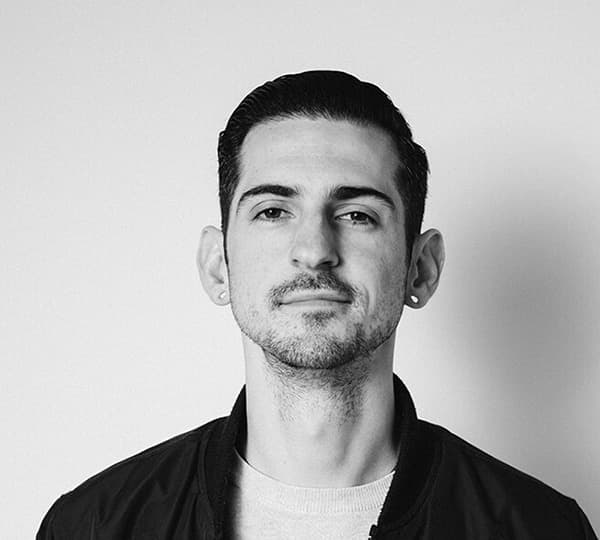
LIGHT OF DAY
It’s the culmination of a journey that started in 2007, when DeLost started a studio in his parent’s basement in London, Ontario, at the age of 15. “I was playing guitar and singing in local bands, and usually the main songwriter. I loved gear, and learned about compressors and preamps and EQ, and tried to give bands decent and affordable recordings. I didn’t fully understand the difference between musician, engineer and producer, I was under the impression you wore all those hats!”
In 2011, DeLost attended the Ontario Institute of Audio Recording Technology, and “began to realise that I’m foremost a producer, as well as a musician.” DeLost continued to play in bands, at one point touring Europe with a headlining band, but after graduating from the OIART music production school in 2012, his focus drifted increasingly towards the recording studio. He set up a studio in Toronto with a friend, Sam Guaiana, and combined the gear that they’d each been collecting. This led to an impressive collection of outboard, mics, and a 24-channel Toft ATB 24 Console with Trident Series 80b EQs.
However, as DeLost explains, “as time went on we realised a lot of that gear wasn’t getting used much. Like many producers and studios, I had some stuff I used all the time, and the rest was there just for the looks. So since coming to LA, I have a minimal setup. The No.1 priorities for me are natural daylight, plants, and good smells. I want the vibe to be creative and uplifting, and not have a dungeon feeling. A lot of people think the cool studio thing is to lock yourself in a dark, moody room. That’s maybe attractive in the beginning, but it gets tiring. It’s nice to see the sun. Especially in LA!”
WHO YOU GONNA (VIDEO) CALL?
Sunlight and great views of LA also dominated the Dead Poet Society (DPS) sessions, but not initially in DeLost’s LA studio, which at the time wasn’t yet ready. DPS and DeLost started work on the band’s album at the end of 2022, while the producer was still in Toronto. Because DPS are from LA, the first steps were taken in true post-pandemic 21st century fashion, via Zoom. The sunshine came soon afterwards, as DeLost explains:
“We had two weeks of Zoom and we tried everything under the sun. Many ideas didn’t get used, but a lot of them did. I think they brought in 50 demos, plus there were five or six songs they had already recorded with producer Benjamin Rice, and we wrote another four or five songs together from scratch. I also added writing and production bits to the songs they brought in. For me it’s a real creative outlet when I’m working with bands in such a hands-on fashion. I often co-write, and also play on almost everything I work on.
It’s been a while since I recorded a band live in the studio! The way I work now is that I overdub the entire song to MIDI drums
“DPS work in Logic, while I work in Pro Tools. We were each on our DAWs, and had the AudioMovers plugin, so they could hear what I was working on, just as if they were in my studio, and vice versa. Like I said, they’re really good producers in their own right, so a lot of the stuff they sent me was used in the final recordings. If it’s great the way it is, why re-record it? I would also play stuff and put it in the session, and I’d send them demos, and they would listen and change things. It was very back and forth.”
GO WEST
In January 2023, DeLost moved to LA. “I was in an Airbnb for the first month, because I couldn’t move into my own place yet. So we recorded most of the record at this AirBnb, which had a big open room, with a great view. This was my top priority. It had an amazing balcony, so if you got a little tired or something, you just went out on the balcony and sat and enjoyed the sunset and you’d come back in with a fresh mind. I had some absorbers custom-made, but the sound wasn’t great. But the place had a really cool atmosphere, and it coaxed many cool ideas out of everyone.
“It was a makeshift setup. I didn’t have any of my studio gear, because we shipped everything over in a big truck, which took forever to get here. I just had my laptop, the UA Apollo (x4) interface, Yamaha HS8 monitors with a sub, a keyboard controller, a few mics, a borrowed guitar, and the UA OX. I recorded vocals just with a Shure SM7B, with the singer on the couch, right beside me. A lot of big studio engineers would be appalled, but there’s so many records done just sitting on the couch.
“We had a large number of mics in our Toronto studio, but I only retained a few here in LA, and the SM7B is one of them, as well as a Neumann U87. The U87 is good for more poppier, more polished vocal sounds, but I use the Shure SM7B on almost everything. It’s just like the Swiss Army knife of microphones. It sounds similar to the U87. I mainly notice a difference in the sibilance and top end, which, when using the 87, is often too much for the aggressive or distorted vocals I’m often recording. And the 7B allows singers to hold the mic and feel more comfortable. Unfortunately, the 7B is a low output mic. But it’s really cool on anything that’s loud, aggressive and distorting.”
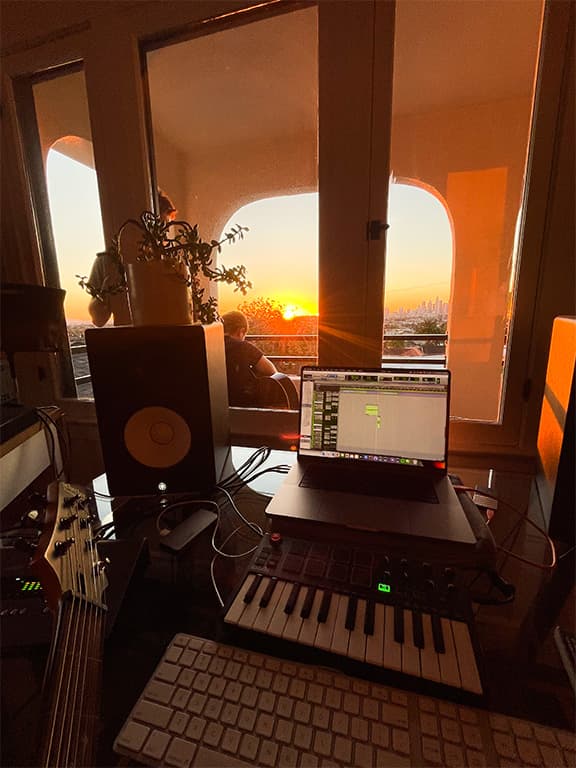
Sunset (Channel) Strip: Views from DeLost’s Airbnb recording station.
I ended up mixing the whole of Fission on speakers I’d never used before, without a sub, in an untreated room!
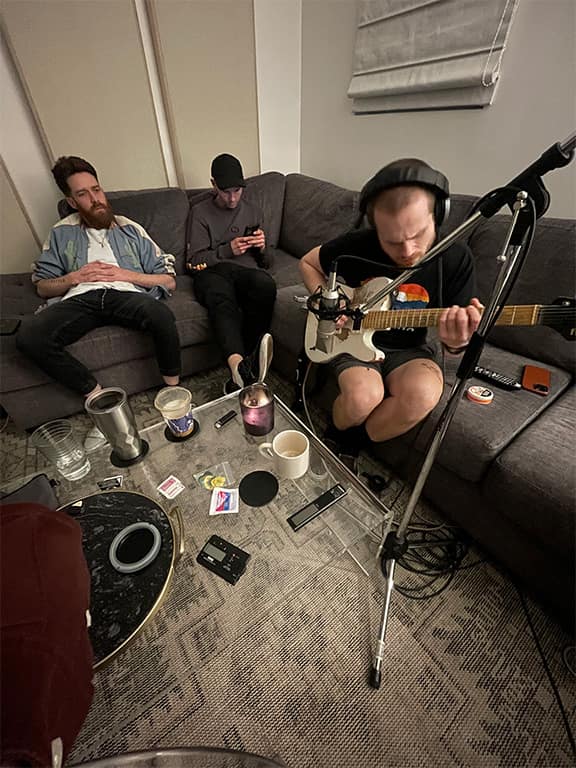
The UA OX Amp Top Box helped DeLost capture aggressive guitar tones without detonating the neighbourhood.
OX TURNS UP
The guitars on Fission are loud, aggressive and distorted but no mics were used to capture the tone – SM7B or otherwise: “Many producers have gravitated towards the in-the-box-amp simulation world. I do that as well, but I still like to use amps. I work with a lot of bands that have fuzz guitars, which is a sound that is a little harder to do in the box. There are many amp sims that do standard distortion and clean sounds really well, but I’m always trying to find tones you haven’t heard before, that are really blown out, or have octaves or some weird stereo chorus on them. I really like to mess with the tone of pedals I have to get unusual sounds. That’s really hard to do in the box.
“A game changer in this respect is the UA OX Amp Top Box, which is amazing at emulating a cab recorded with a mic. You can set it to all kinds of different mic and cab emulations, and yet you’re still using your amps and your pedals. When I first tried the OX, I was like, ‘there’s no way it’s going to sound like my amps through my cabs.’ But it blew me away.
“The OX also has an attenuator, so if you want the sound of blowing out your amp, and not have a crazy-loud cab rumbling your neighborhood, the OX will turn it down. It is just perfect. It also has a room knob that emulates the sound of different rooms. It’s awesome. We recorded all the guitars at the AirBnb via the OX. They borrowed an amp, and I brought a bunch of pedals. One example is the Electro Harmonix Bass Micro Synthesizer, from the ’80s. It has a bizarre square wave fuzz and some crazy octave stuff.”
PUSHING TONES
“I used many in-the-box fuzzes as well. The main plugin I use is the STL Tonality, Howard Benson and Mike Plotnikoff. That’s really good for standard Marshall Distortion sound. I also like the Waves REDD Abbey Road channel strip, and SoundToys Decapitator. I would literally crank the REDD as far as you can crank it and then decapitate the hell out of it. We were pushing the boundaries in terms of tones all the time.
“We also worked a lot with octaves. What I like to do sometimes is duplicate the guitar track, and then use the Waves SoundShifter to go an octave down or up. Many people do that with the SoundToys AltarBoy, but it doesn’t really work with guitar, although it will do a vocal well. Another plugin I like to use is the KVR Audio NA Quinta Pitch Machine, that acts like an octave guitar pedal.
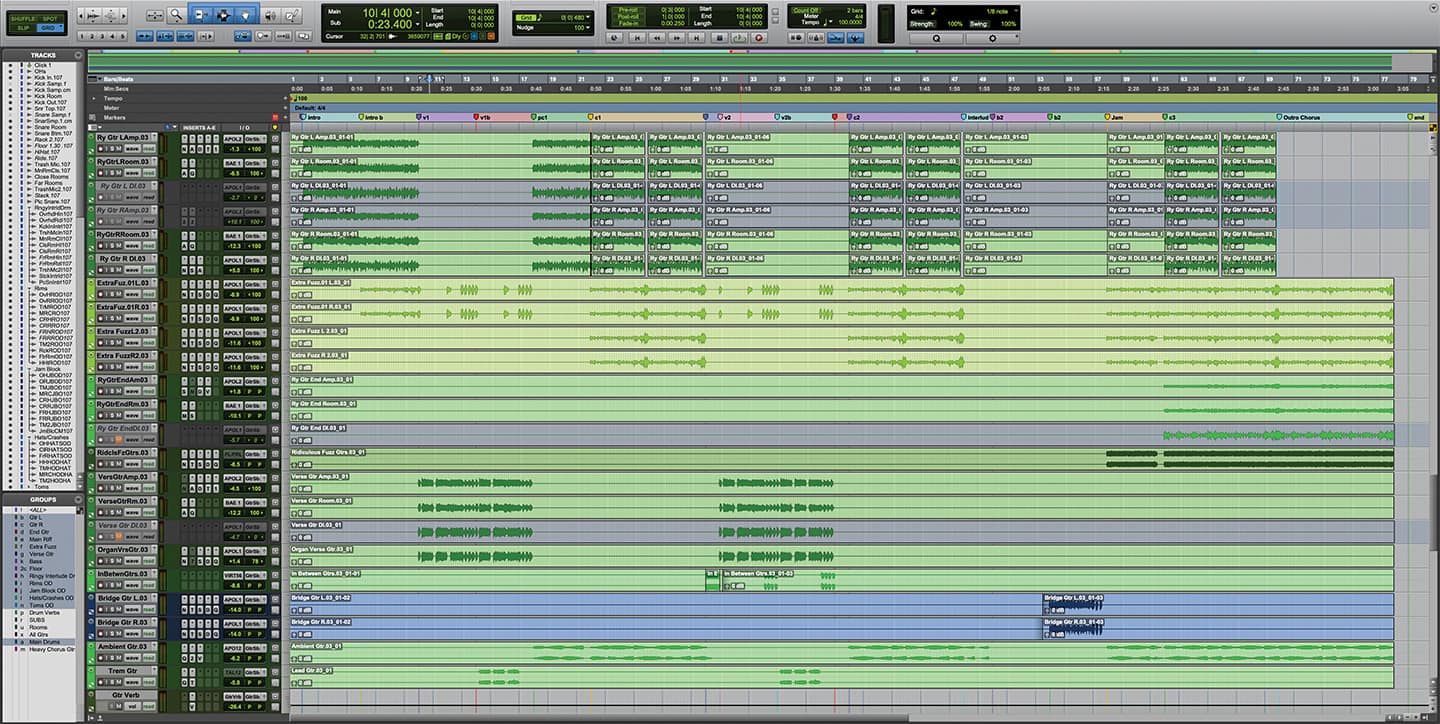
The fretless guitars on Koet were quad tracked – not for the faint hearted.
“The album’s opening track, ‘5:29:45’, has many of these extreme guitar tones. It’s so evil and has such a feel, that it immediately puts you in a place, and it’s like ‘whoa!’ The song ‘Koet’ has bizarre tones, and fretless guitar parts. We quad tracked them. When you quad track a fretted guitar, the intonation is going to be pretty much the same, but with these fretless riffs, it’s microtonal. You have to match up the exact inflections and pitches of each part four times in a row, which was very challenging.”
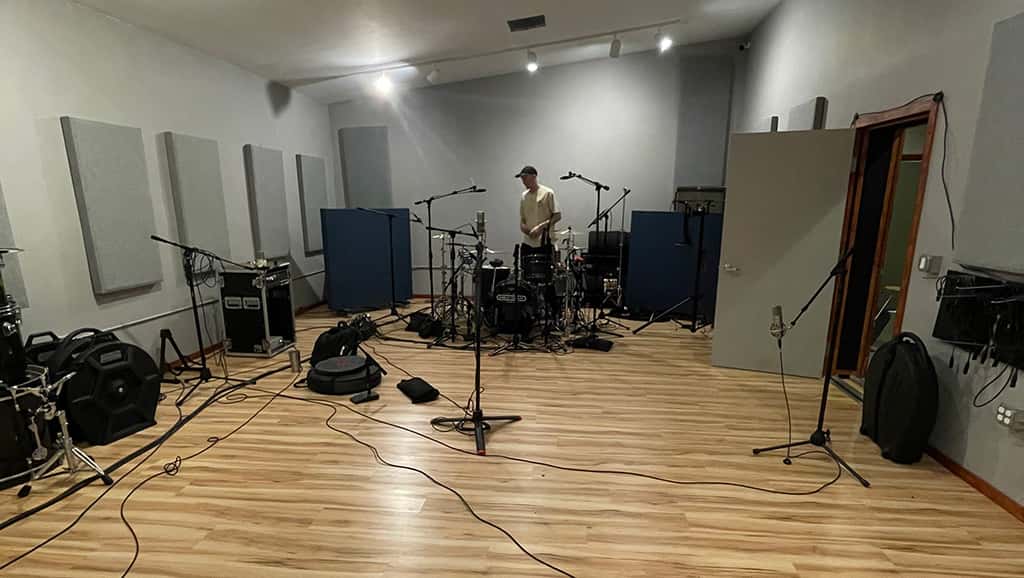
DRUMS FINALE
Surprisingly, given how vibrant and in-your-face DeLost’s productions are, he no longer tracks bands live in the studio. As a result of DeLost’s drive to cut his studio equipment down to the bare minimum, he prefers overdubbing, and tracking drums at the end of the recording process, in a dedicated studio.
“It aligns with my priorities when writing and tracking, which are to not only to work in a place with daylight, plants and vibe, but also to have convenience and efficiency. I want to eliminate engineering from my brain when I’m doing pre-production or recording a song. I want to be so fast that I don’t have to think about anything related to engineering. I want my mind to always be in creative mode. So I prefer to keep sessions simple, and also to work as little as possible in more traditional studios.
“It’s been a while since I recorded a band live in the studio! The way I work now is that I overdub the entire song to MIDI drums. I make them sound as good as possible, and I track the instruments and vocals to that. In the process I can adjust the MIDI drums as required. [[I track live drums after that, because it’s really hard to change live drum parts after you’ve recorded them. Since I moved to LA there are a couple of studios I use for this. For the Dead Poet Society album we went to West Alley Recording, which belongs to producer Kyle Black. It has an awesome-sounding room. Lately I’ve used David Grohl’s Studio 606, which is a legendary place, and very inspiring.”
Recording the drums for the song ‘Koet’ at West Alley was a particularly memorable session for DeLost. “There are probably 70 drum and percussion tracks. We separated everything because of how syncopated things were, and also because I was distorting the hell out of some of the room mics. I wanted to have the ability to control what we were distorting later in the mix. We tried all kinds of stuff. We set up drum stands and taped or hung snares and toms and stuff on them, so they sounded almost like bells or metal. There were tons of jam blocks, cowbells, cymbals and drum shells, and many very unusual rhythms.”
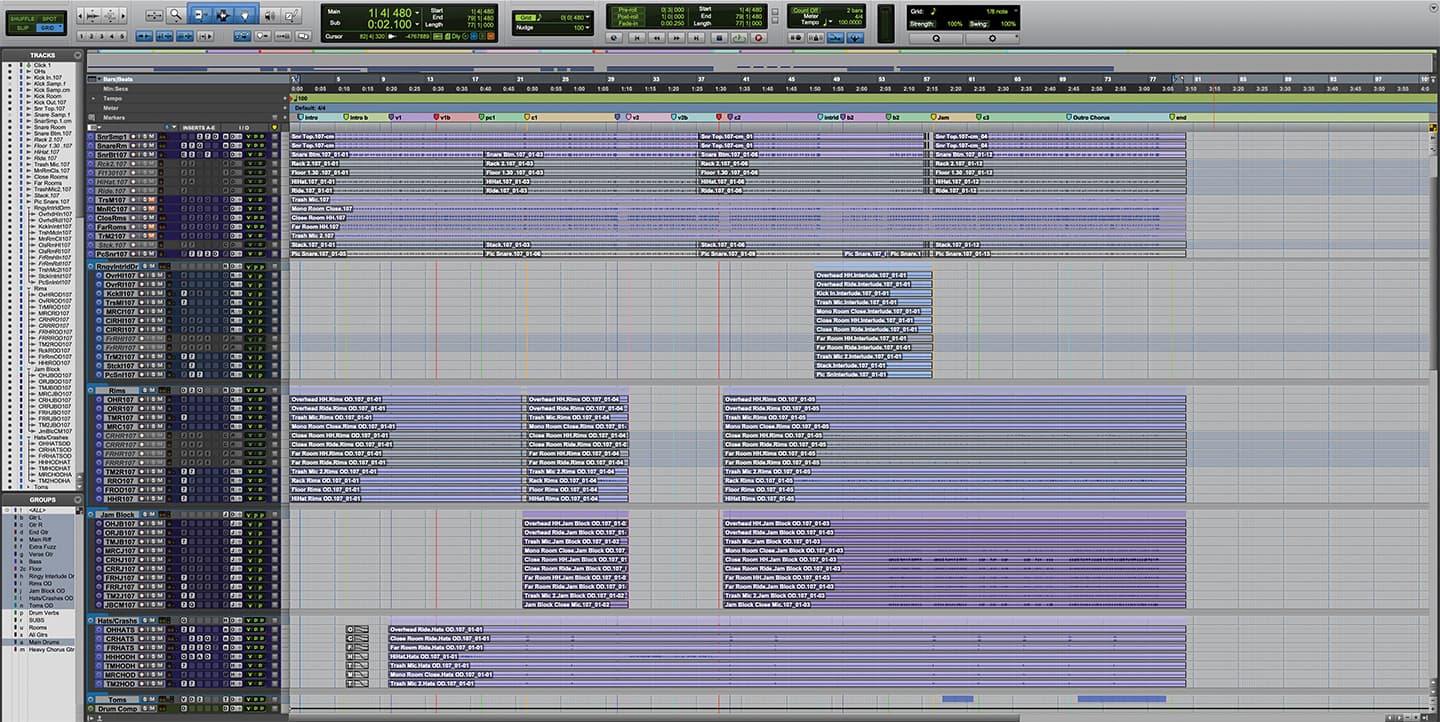
Recording the drums for ‘Koet’ at West Alley resulted in a monster session with around 70 drum and percussion tracks.
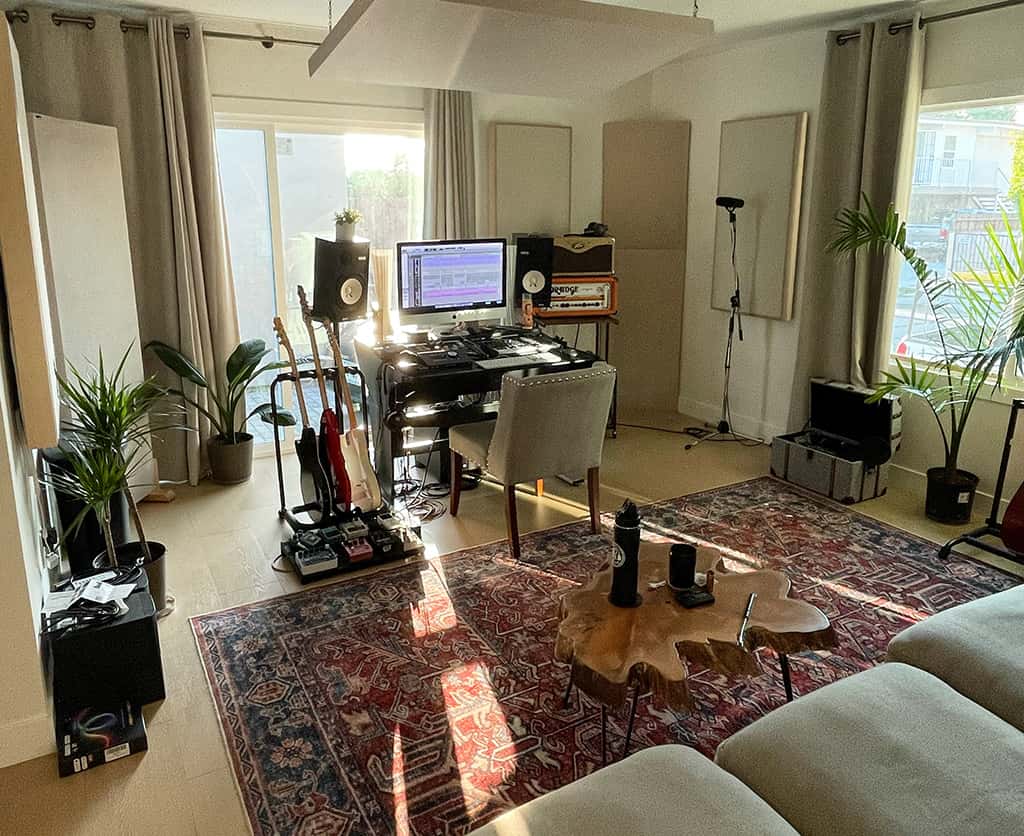
After the drums were recorded and edited, DeLost mixed the entire Dead Poet Society album, as he tends to do with 99% of his productions. In this case, it was the first project in his brand new studio. “This was in February 2023. My gear had still not arrived, so I bought some furniture, including a desk to put my laptop on, and I went out to the Guitar Center, and bought what looked like monitors that were the best bang for the buck, which were Adam T5Vs. They sounded awesome. I really really enjoyed them. I’m actually a fan of Yamaha NS10 monitors with the sub, and it’s what I have in my studio now. But I ended up mixing the whole of Fission on speakers I’d never used before, without a sub, in an untreated room!”
HANDS ON
Throughout the process of making and mixing Fission, it was DeLost’s job to hone in on the best ideas, the best performances, and the best sounds, and to combine them into a cohesive whole. “I was like an organiser, an overseer, doing whatever I could do to bring all songs to the same level. I had to understand how they work as a band, so there was a lot of writing, a lot of production, and a lot of playing. It ended up pretty hands-on for me, which is how I work on a lot of my productions. In fact, I have a co-writing credit on the majority of the songs.
“At the same time this record was such a learning curve for me because DPS were the least by-the-books band I’ve worked with. But I absolutely loved it. It was such a cool project. The album turned out different from what they’ve done in the past, because, they’re the type of band that doesn’t necessarily want to stick to a certain sound. If they start a song that’s going in a direction that’s different than everything else, they’ll just lean into it.
“The song ‘My Condition’, which is one of the singles, is such a good example. It’s in a major key, and it’s very alternative radio. I was like, ‘I don’t know if your fans are going to dig this.’ But many people were like, ‘wow, this is really special,’ and many of their fans love it. I think overall the album is definitely different. There’s less blues on this album, and so some people say, ‘oh, there’s a Royal Blood feel or Nothing but Thieves feel’. DPS take influences from other bands, for sure, but they have such a distinct sound that I think they sound like themselves only.”





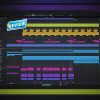








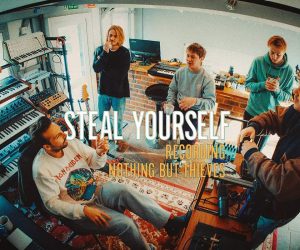



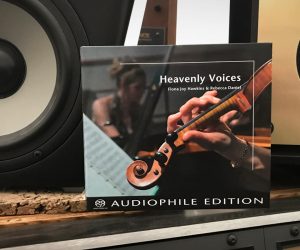

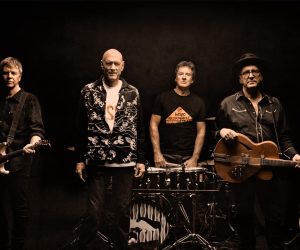


RESPONSES